#comet pons brooks
Explore tagged Tumblr posts
Text

Three Together via NASA APOD

#comet pons brooks#comet#jupiter#planets#moon#crescent moon#space#astrophotography#astronomy#solar system#stars#sky#galaxy#universe#nasa#apod#night
4K notes
·
View notes
Text

Twin Tails of Comet Pons-Brooks
4K notes
·
View notes
Text

Comet Pons-Brooks © astrocatinfo
#comet#comet pons brooks#space#astrophotography#solar system#stars#galaxy#universe#planet#astronomy#cosmos#night sky#comet 12p/pons brooks
747 notes
·
View notes
Text
Comet Pons-Brooks' Swirling Heart

We'll have a special bonus during April 8's total solar eclipse: Comet 12P/Pons-Brooks returns to the inner Solar System and will appear in the daytime only 25 degrees from the Sun as it goes dark.
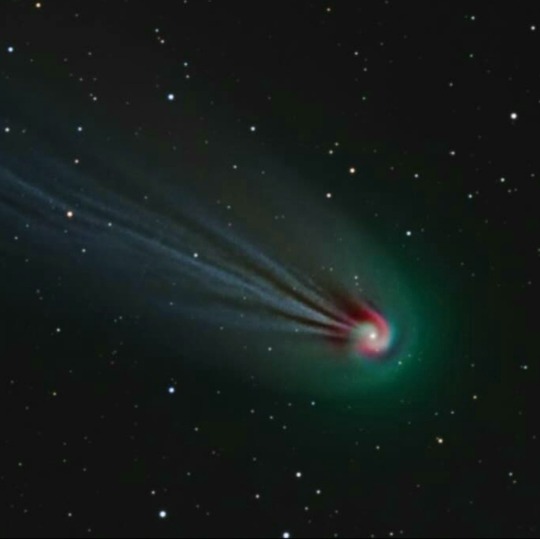
This image by Jan Erik Vallestad shows the comet's ever-changing ion tail in light blue and its outer coma in green, while red-glowing gas spirals around the coma, likely expelled gas from the giant iceberg of a comet's slowly rotating nucleus.
45 notes
·
View notes
Text
youtube
Solar eclipse 2024 will be a total eclipse of the Sun and is being called "the Great American" eclipse; but the infamous Pons Brooks comet, also known as "the Devil comet" will be visible from Earth at the same time.
3 notes
·
View notes
Text
comet !
nasa's apod keeps featuring comet pons brooks, which is for good reason because every time i see that blob of ice and dust and i don't know what else, my jaw drops. like. you're telling me, that is real and if i had the right kind of eyes, I could see that?
i should have been born as a special camera or a bee, goddamnit
nasa apod link if anyone wants it: https://apod.nasa.gov/apod/astropix.html
5 notes
·
View notes
Text
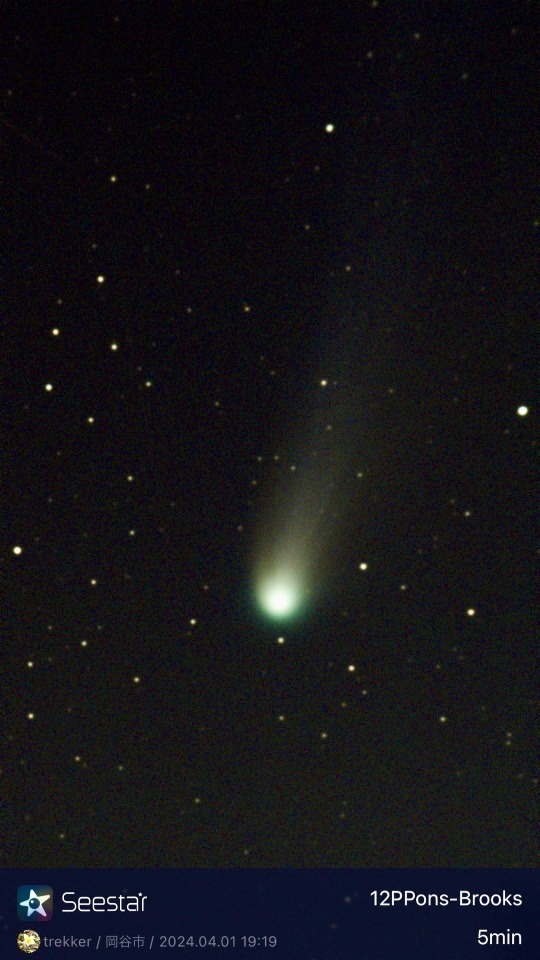
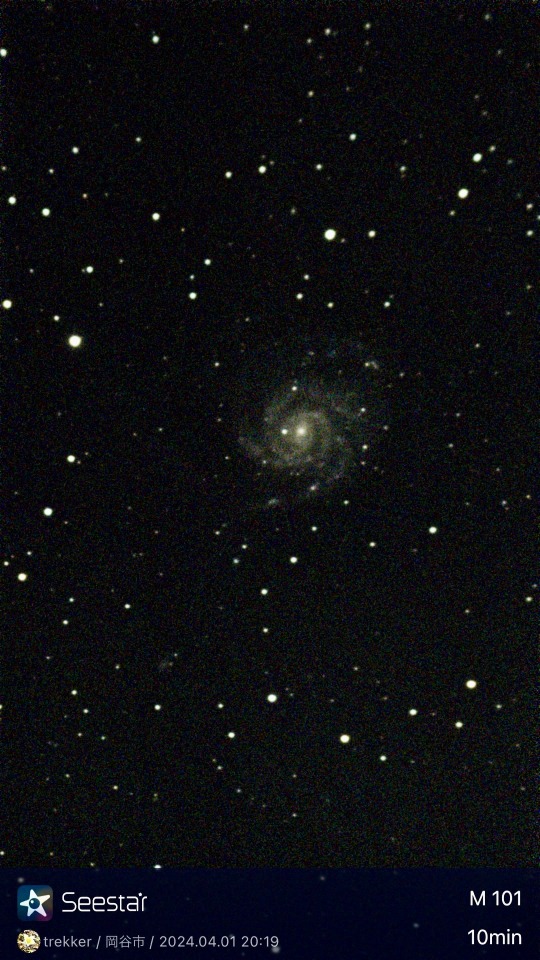
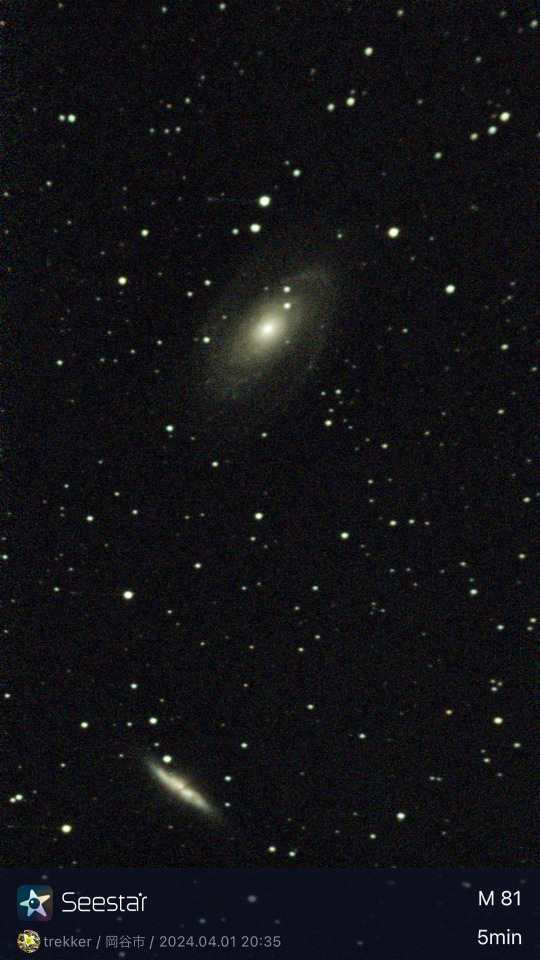
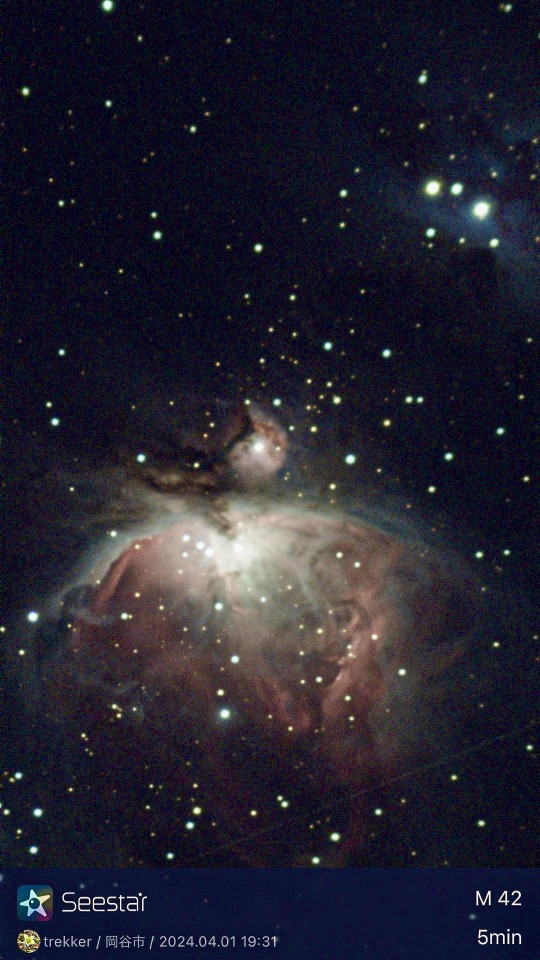
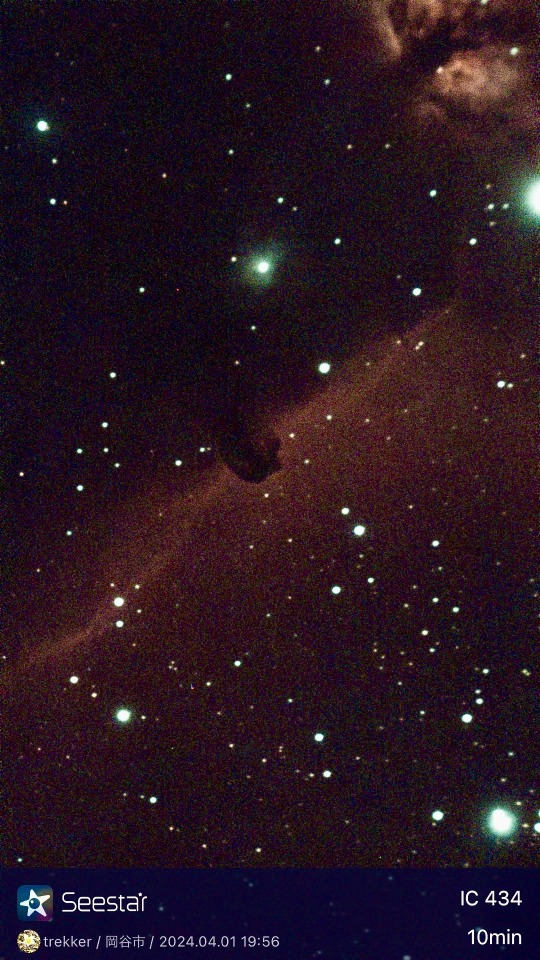
先日入手したスマート望遠鏡で撮ってみました。結構綺麗に写りますね🤩
0 notes
Photo
In this perspective, the Corona extends almost to Mercury!

2024 April 17
Total Eclipse and Comets Image Credit & Copyright: Lin Zixuan (Tsinghua U.)
Explanation: Not one, but two comets appeared near the Sun during last week’s total solar eclipse. The expected comet was Comet 12P/Pons-Brooks, but it was disappointingly dimmer than many had hoped. However, relatively unknown Comet SOHO-5008 also appeared in long duration camera exposures. This comet was the 5008th comet identified on images taken by ESA & NASA’s Sun-orbiting SOHO spacecraft. Likely much smaller, Comet SOHO-5008 was a sungrazer which disintegrated within hours as it passed too near the Sun. The featured image is not only unusual for capturing two comets during an eclipse, but one of the rare times that a sungrazing comet has been photographed from the Earth’s surface. Also visible in the image is the sprawling corona of our Sun and the planets Mercury (left) and Venus (right). Of these planets and comets, only Venus was easily visible to millions of people in the dark shadow of the Moon that crossed North America on April 8.
∞ Source: apod.nasa.gov/apod/ap240417.html
89 notes
·
View notes
Text

Comet 12P/Pons-Brooks over a week in April 2024 // Thomas Rox
#astronomy#astrophotography#solar system#icy body#comet#kuiper belt#comet pons-brooks#12P/Pons-Brooks#Comet 12P/Pons-Brooks
114 notes
·
View notes
Text

What a greeting, is it not?
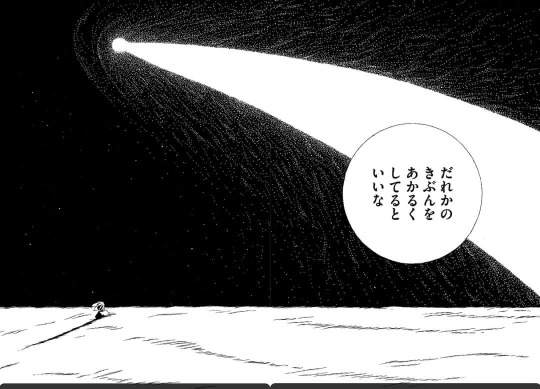
I'll see you, Phos.
#houseki no kuni#hnk phos#phosphophyllite#phos#houseki no kuni phos#hnk#haruko ichikawa#Ichikawa srsl owe me my therapy fees#hnk 108#comet 12p/pons brooks#2024 comet 12p/pons brooks
64 notes
·
View notes
Text
Such a long journey

Every 71 years visits this comet called 12P Pons Brooks the inner solar system and passes the sun. At the moment he is close to the sun which leads to its Coma and tail.
I capture it with 51 frames each exposed for 30s.
#astronomy#universe#space#space photography#astrophotography#night sky#astrophysics#nature#comet#comet 12p/pons brooks
82 notes
·
View notes
Text

Opposing tails of Comet Pons-Brooks l NASA APOD
#comet#nasa#apod#astrophotography#astronomy#comet pons brooks#planets#sky#galaxy#stars#space#solar system#universe#comet 12p/pons brooks
1K notes
·
View notes
Text
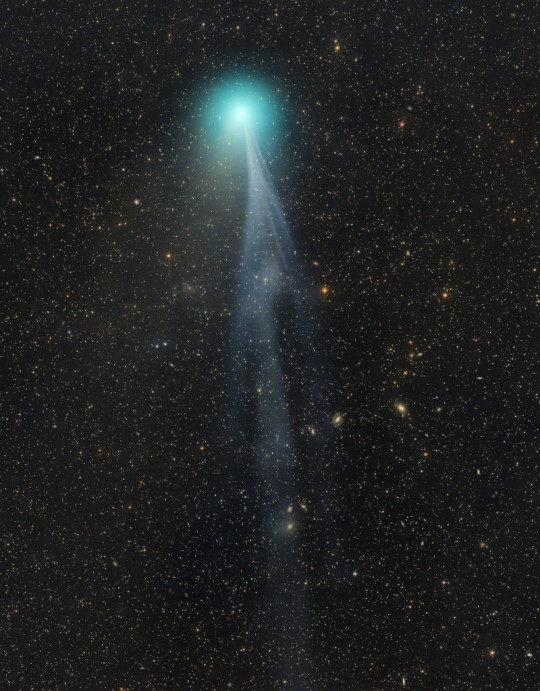
Comet Pons-Brooks
3K notes
·
View notes
Text
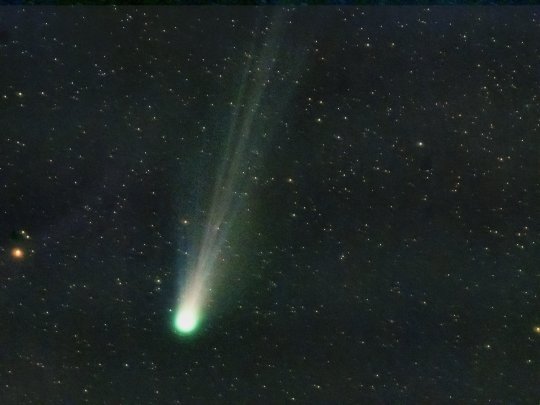

Comet Pons-Brooks © Chris Jones
#comet#comet pons brooks#space#astrophotography#nasa#universe#stars#night sky#solar system#astronomy#galaxy#planet#cosmos
955 notes
·
View notes
Text
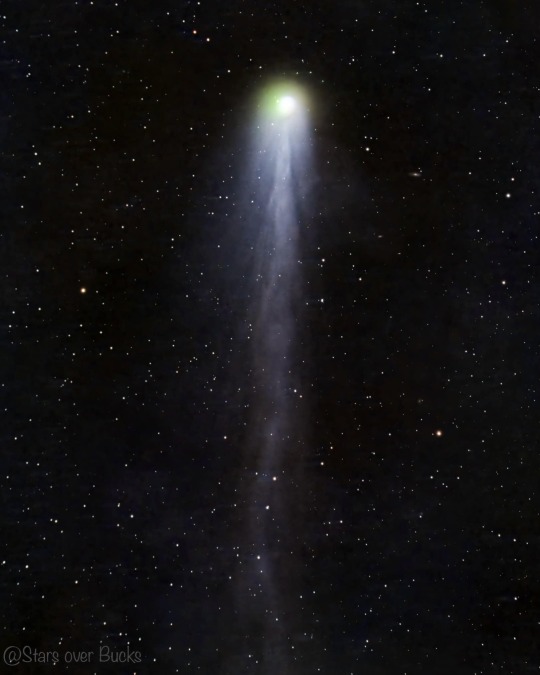
Comet 12P
Potograph taken in Pons-Brooks on the evening of March 16th. The comet is still 151 million miles away and slowly getting closer. The comet is also slowly brightening but also getting lower in the sky after sunset making it more difficult to capture. It will continue to get closer to the Sun over the next few weeks and become more difficult to see.
There was only about 40 mins from the start of darkness after sunset to when the comet set in the northeast. The comet is now magnitude 5, technically making it visible to the naked eye under a very dark sky, but practically speaking you will need binoculars to see it.
Courtesy: Stars Over Bucks
#art#cosmos#cosmic#universe#blast#space#photography#comet#comet 12P#pons-brooks#march#starsoverbucks
57 notes
·
View notes
Text
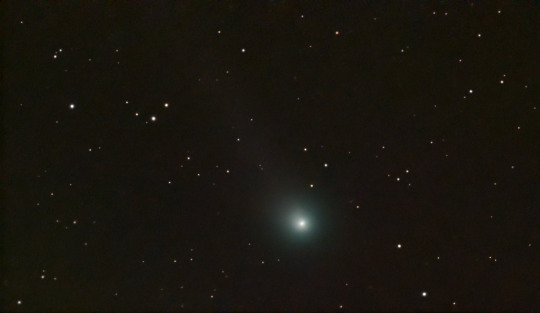
A photo of the comet 12P ponce-brook, taken from my bedroom window. In the middle ages, comets were regarded as omens of great change, generally bad ones. It's only after the discovery of their periodic return (during the 15's to 16's hundred) and later discovery of their nature (big balls of mostly ice and some rocks orbiting the sun) that comets stoped to be feared. Despite that, I still find them to be awe-inspiring.
For those interested, this comet is currently visible with a good pair of binoculars or a telescope if you look in the Andromeda constellation (more information on positions and visibility: https://theskylive.com/12p-info) I would have taken more pictures or a better one if the clouds had not been consistently thwarting any attempts at observation in the last week and a half.
#astrophotography#astronomy#night sky#comet#comet 12p/pons brooks#taken from my bedroom window#may the clouds be damned
31 notes
·
View notes